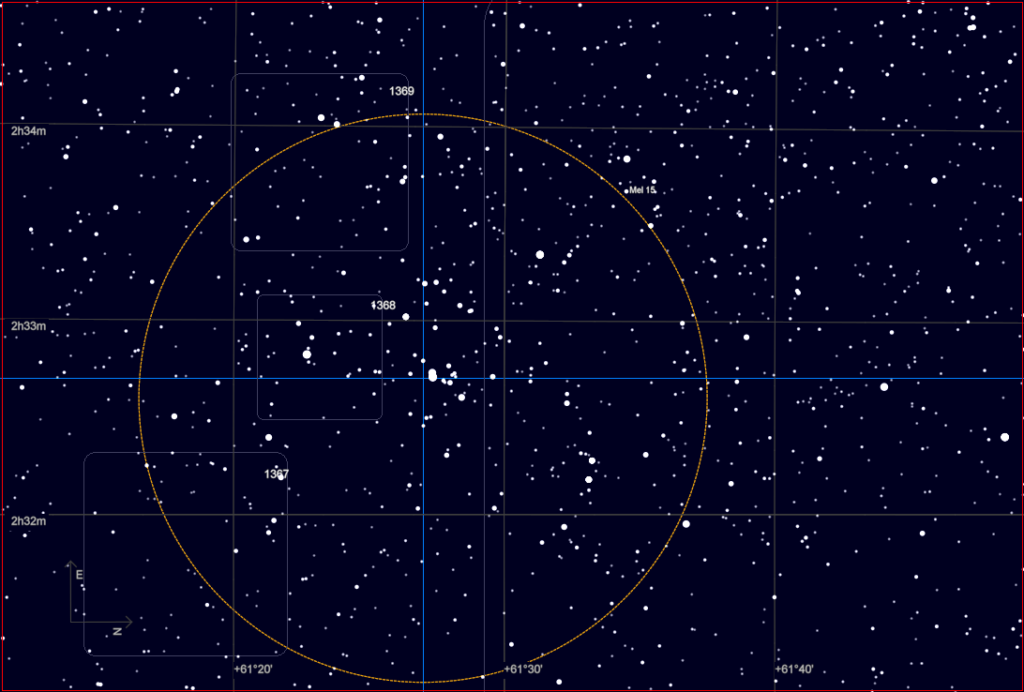I am still developing the procedures necessary to process one shot color (OSC) camera images. This is the first D90 image I have processed using the color information. The steps to process an OSC camera are totally different than the steps I use to produce color images taken by my science camera. The larger FOV also adds additional complexity. This image is 2.83° wide versus my science camera having an FOV of only 24′ (arc minutes). However, the increased area makes it much easier to image multiple objects without having to assemble a mosaic of smaller images.
This picture is centered on an object in the southern constellation Sagittarius: The Lagoon Nebula. Also known as M 8, it is a large emission nebula being energized by the open star cluster NGC 6530 that lies in it. Also easily visible towards the lower right is M 20 (The Trifid Nebula) containing both emission and reflection nebulae. The small concentration of stars at the upper left is the globular cluster NGC 6544.
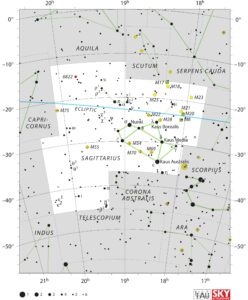 Chart courtesy of IAU/Sky&Telescope |
The vertical yellow line that runs all the way through the CdC chart is the ecliptic. Since most asteroids orbit in the plane of the solar system, the image contains a lot of them. I counted 31 identified on the chart by small green dots, but due to the image scale and the asteroid’s magnitudes I couldn’t find any of them.
Both M 8 and M 20 are just visible with binoculars. Using the constellation chart, observe just above the spout of Sagittarius’ Tea Pot asterism (heavy green lines).
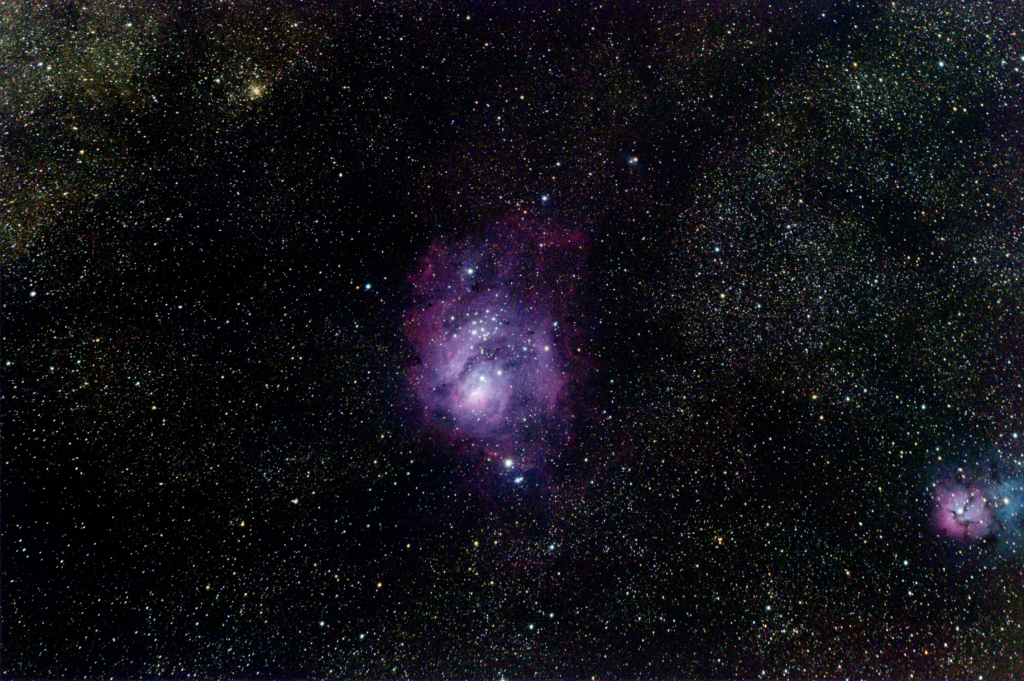
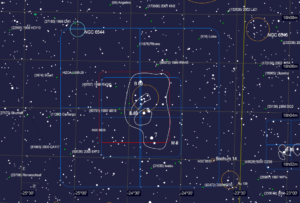
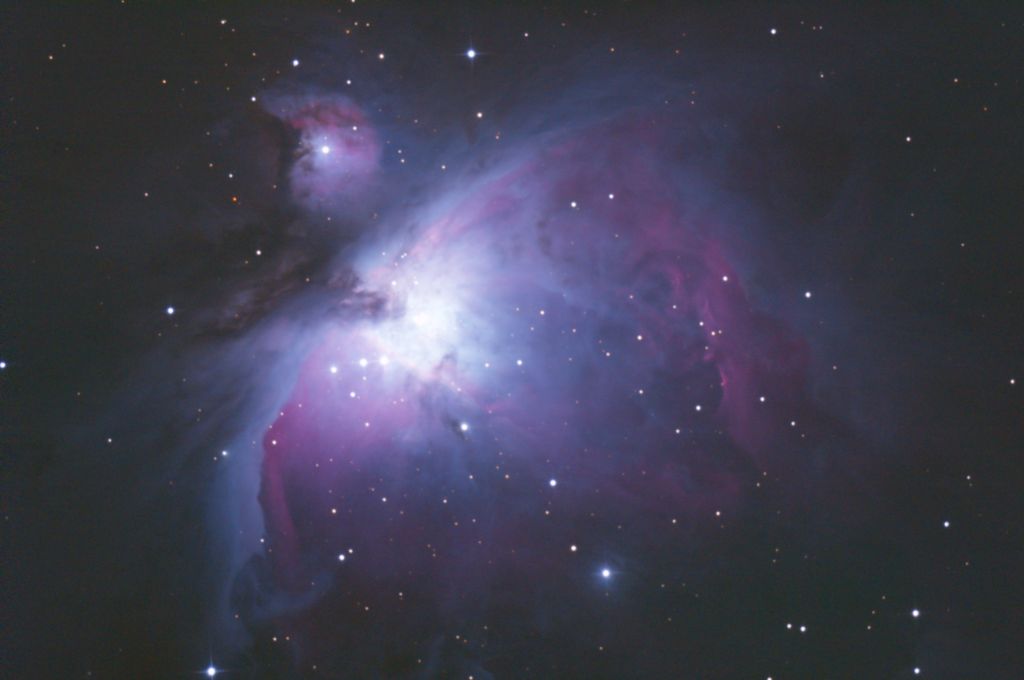
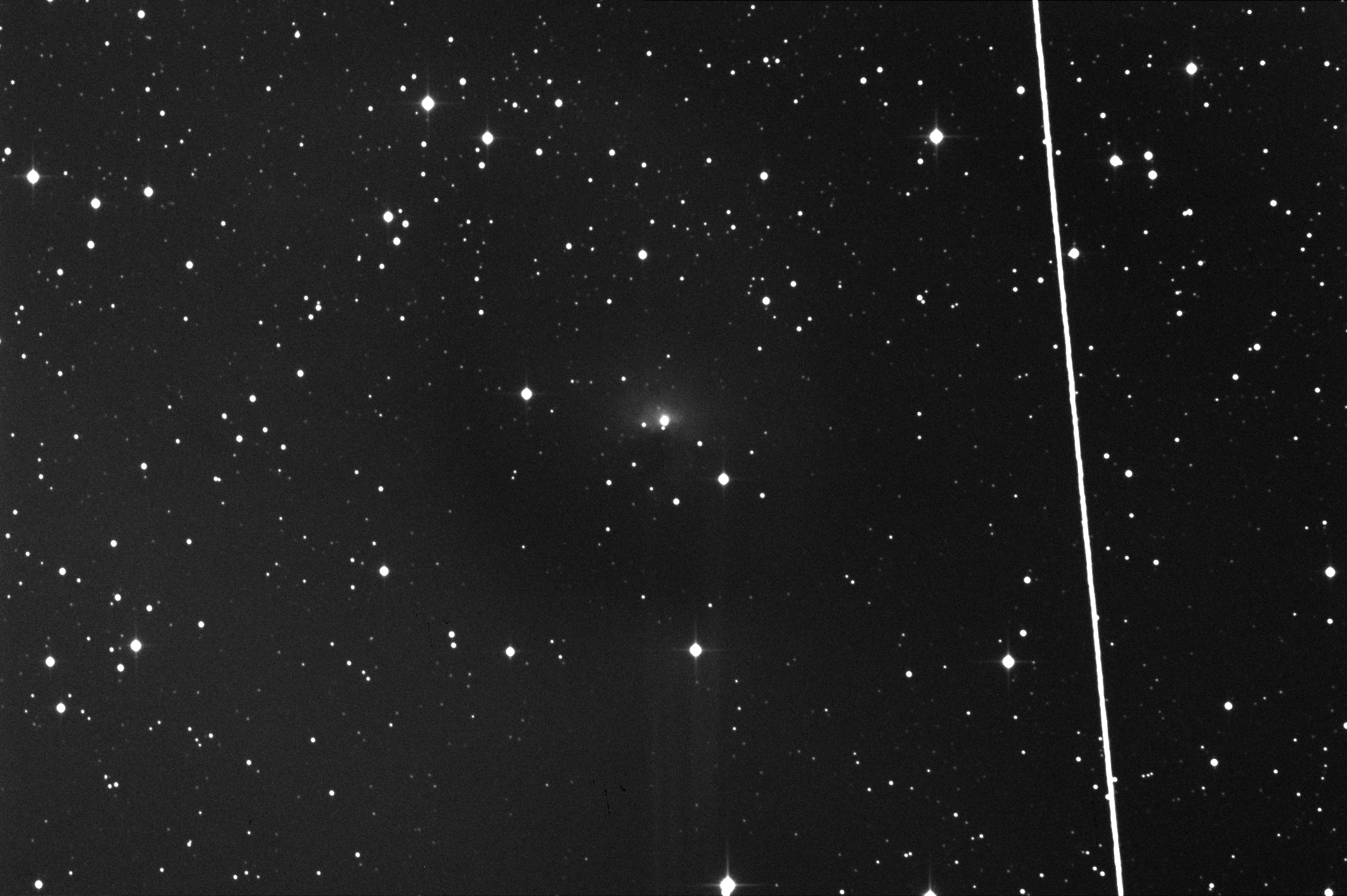
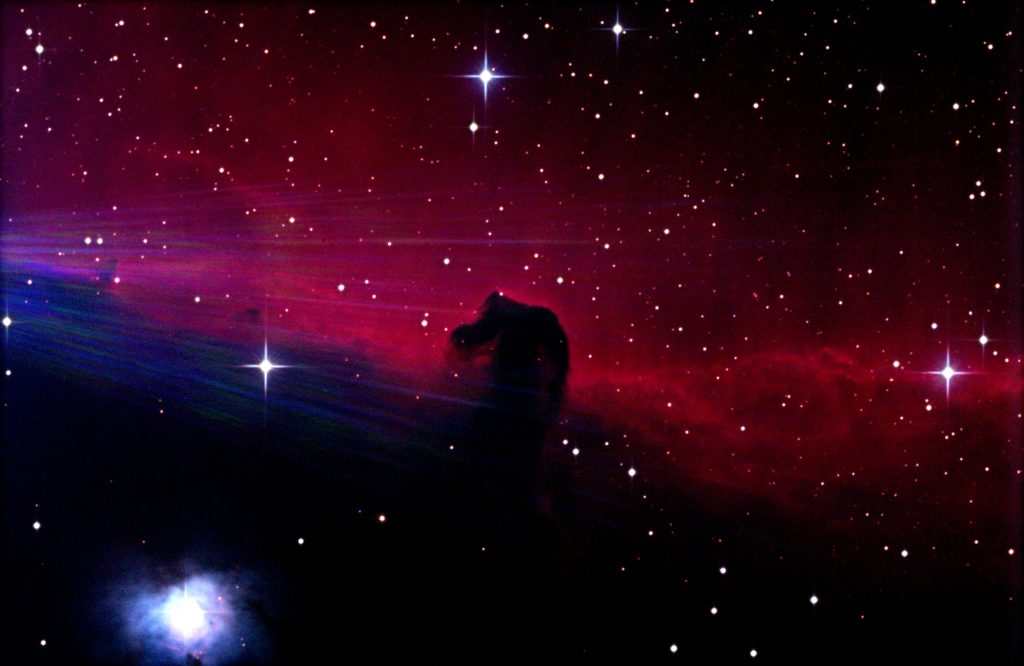
![The Heart Nebula (IC 1805 detail) [Ha:67x120s ]](https://ptobservatory.com/wp-content/uploads/2016/11/str_crv_dcv_ddp_IC-1805-1024x690.jpg)
